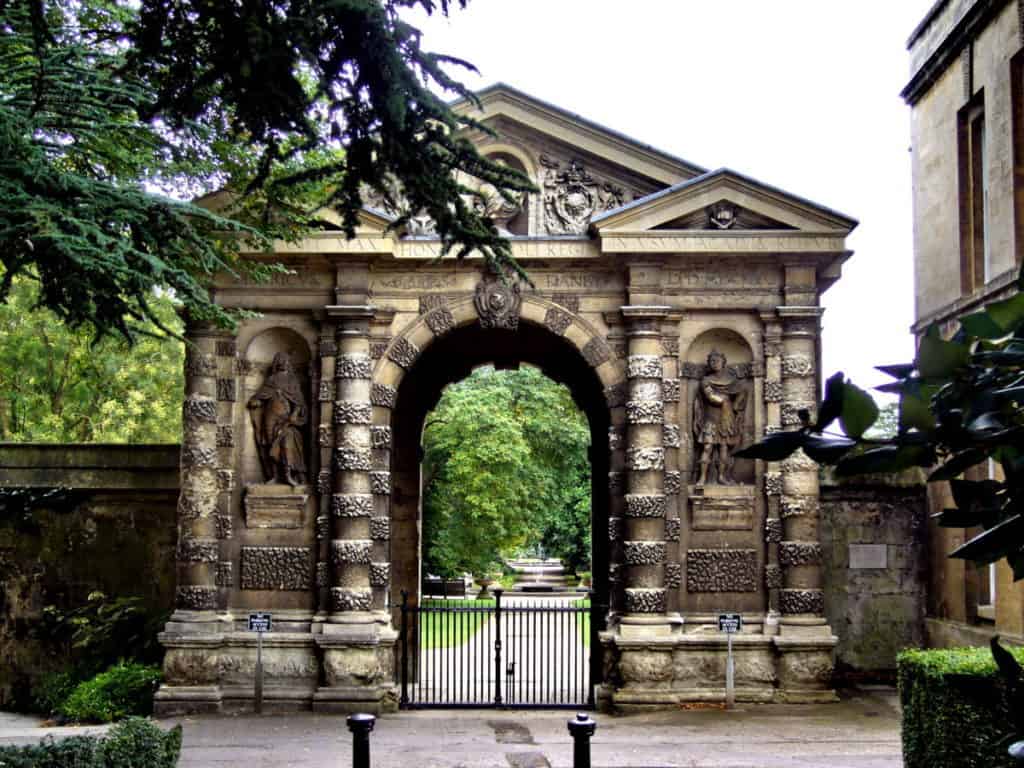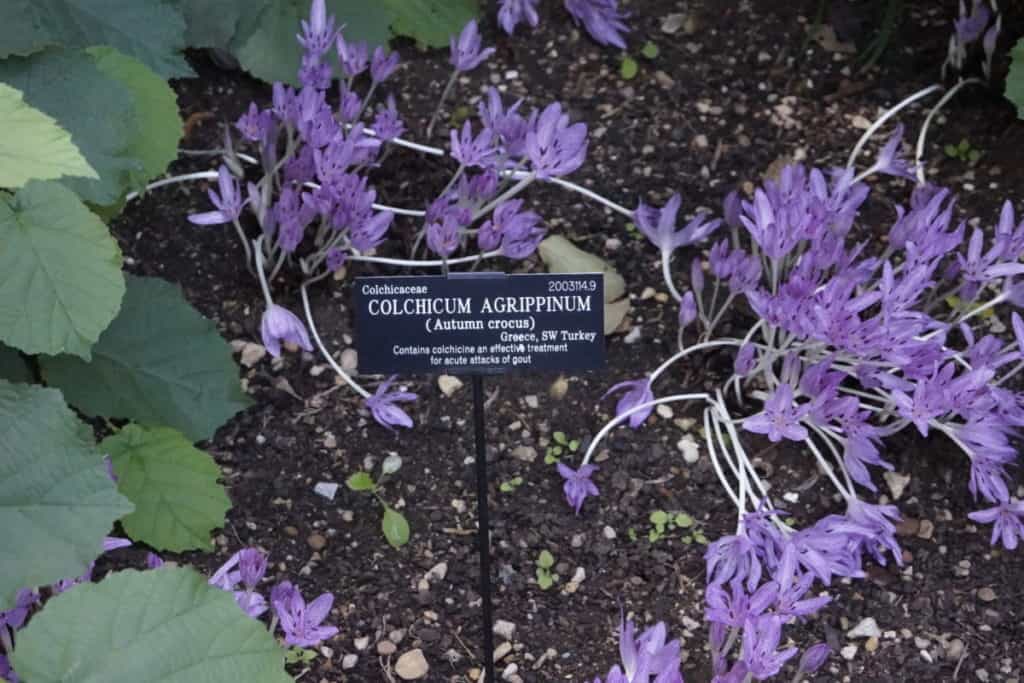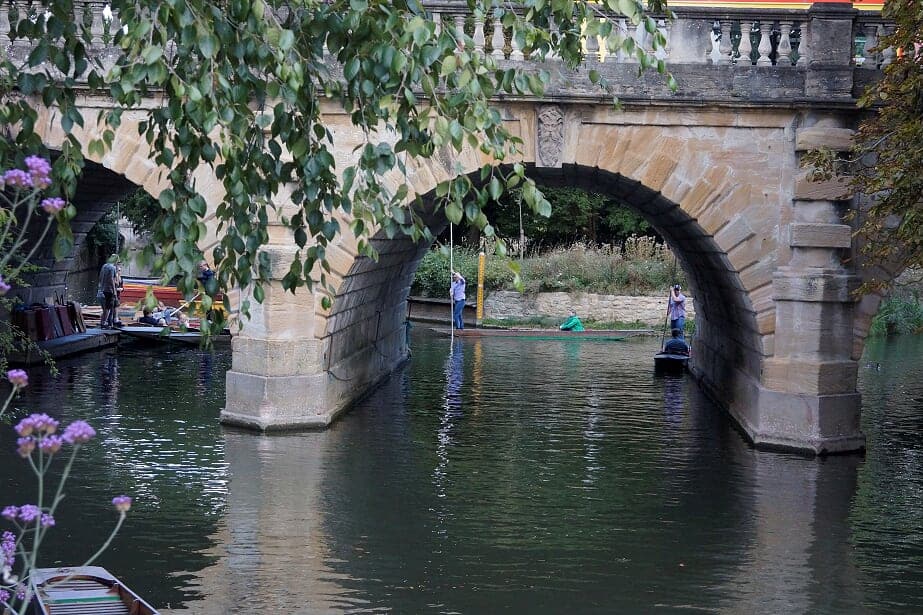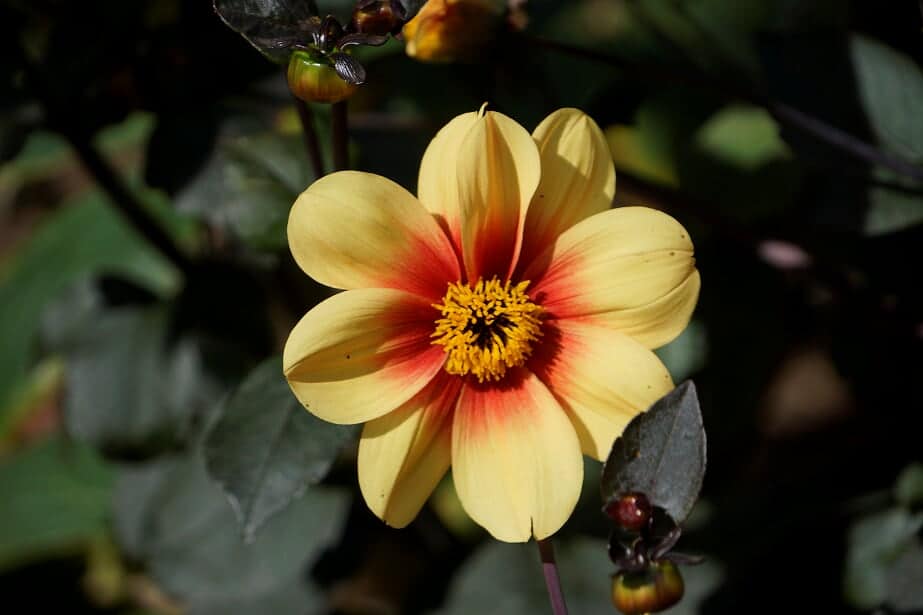The Garden and Its Place In The Town
If you can, by all means, see Oxford’s ancient botanical garden. The history you will encounter is remarkable. To visit this garden is to have the opportunity to see what 900 years of progress has brought us. As travelers, we improved our knowledge of the world. Interestingly, it was easy, we just had a stroll in a pretty garden!
Why you Want to See this Garden
Pretend it’s 1621, the year this garden started. The times are changing. The Age of Enlightenment is on the way. We are beginning to alter the way we think about ourselves and the natural world.
People are eager to apply intellect and science to gardening. This green place in the middle of an ancient university was founded as a Physic Garden, to grow plants for medicinal use and to train medical professionals.
Today, it is the oldest English Botanical Garden and one of the oldest and most significant scientific gardens in the world. This ancient garden is an important place to visit because it changes the way we all view and create our gardens today.
Today And Yesterday
Oxford University scientists, now, do crop research to feed the world. We walk along the garden’s calm pastoral walkways. We enjoy the beauty. But we might not notice that these 5 acres have always been a hotbed of accomplishment and controversy.
Today, people worry about what research is doing to plant genetics. When these gardens were young, people worried about how science was affecting their faith and their worldview.
The Herbarium here houses the dried remains of Fairchild’s Mule, the world’s first-ever hybrid plant, created in 1717. Just imagine the stir that produced! People got queasy! You stroll around and have to remind yourself that this place with over 8,000 plant species in only 5 acres is one of the most biodiverse places on the planet.
How To See It- What you Might like to See When You Go

Photo Credits: (C) Tatiana Dedyukhina, Wikimedia Commons
Start in the center of Oxford, you are in the middle of all the sights in this town. The garden opens conveniently from the High Street. Now, stop before you enter and take a good look at the Danby Gate.
This will give you an idea of how to lay out a science-based, forward-looking garden in the early 17th century. Henry Danvers, the first Earl of Danby gave £5000 to build a Physic garden. You won’t find many science labs like this one. His plan was to do a first-class job! I read that when Henry Danvers built this garden, he spent so much money on the beautiful stone walls and three impressive gateways that it was tough to find enough cash to plant with! Haven’t we all gone a little overboard on a project?
Nicholas Stone, a master mason built and designed the Danby Gate.He was a master mason who worked on royal commissions. Look at it just above. That’s Charles I and II in statues on either side of the opening and Danby, himself, in the center. You feel that you are going someplace interesting when you walk through it.
This entry is elaborate, it reflects ambition, and it promises a big deal beyond. It really sets the stage. We live and garden in a Florida town with a botanical garden that covers 170 acres. Don’t overlook Oxford because of its small size. You will be impressed by what they have accomplished over the years.
The Walled Garden
Enter the walled garden now. Walk the gravel paths, it’s calming and accessible. You can bring everybody.
Meet the Families
Go between the planting beds laid out in plant families, all members together. These beds are cut into the green lawns and give you a chance to observe the varied members, large and small of each family. Some you’ll guess and some are surprises. It’s like meeting an extended human family- “those two are related”!
Plant families are the core of the collections, ordered in the way designed in the 19th century by the leading botanists Bentham and Hooker.
Plant DNA testing is going on now. The remarkable thing is that up to today, botanical assignments were made with the only tools available – your eyes – just by looking at the plants. We are learning that mostly they are spot on.
This is Taxonomy -it’s how we identify, classify, and name organisms.
It goes like this, domain, kingdom, phylum, class, order, family, genus, species.
A Family is just a collection of plants that share common characteristics, it’s followed by a Genus, remember, it’s generic, related plants in a family. Species comes next, it’s specific, and it describes one kind of plant within the genus.
In some cases, the botanical assignments are changing. The Philodendron Selloum (the name means that it loves trees.) is having its Genus changed. In Florida, where we live, it is a landscape stalwart, lending a leafy green tropical accent we enjoy. (Yes, it looks like your northern house plant.)
It’s getting a new Genus. Its placement has been debated for 100 years and now based on DNA evidence it is moving on.
Enjoy the Layout
The walled garden is laid out on a classical axis, it’s an easy walk, with flat gravel paths, neat little metal edges to the green lawns, plenty of seating, historic shade trees, and wonderful lines of sight.
What Makes A Great Garden To Visit?
The truly great gardens always bring you a little magic! The enchantment of this garden is that it is a serene space but tightly surrounded by a busy world. Over the walls are the spires of one of the world’s most important centers of learning. Sit by the fountain at the intersection of the four walkways and look out. Beyond the green and over the wall is the tower of Magdalen College. (You say it Mawdlyn) and it is a prominent symbol of the town. The college is surrounded by 100 open acres, including a deer park, along the River Cherwell. This place is beautiful and productive. Fellows of this college include people like Joseph Addison, Seamus Heaney, and CS Lewis. (There are more colleges, 38 in total.)
If you visit in May, enjoy the bearded iris collection in the northwest corner. Some varieties of these beauties grow nowhere else.
Here is the Physic Garden in the 21st Century
Notice the 8 beds in the southwest corner, these are medicinal plants, they are divided into sections according to the diseases they can be used for. You’ll be surprised by what’s included. Plants here are under study for use in diseases of all types. They range from being a starting point for a drug discovery program all the way to some being directly suitable for use as a drug.

The planted borders along the walls are interesting. Some are grouped according to the microclimates they do best in. Many are identified by the global regions they came from.
Other sections of the wall beds represent endangered species from biodiversity hotspots including Japan and New Zealand. In conservation terms, these are important places. They represent only 2.3% of the earth’s land mass but they contain over 50% of the world’s plant species. Botanical gardens like this one, hold such plants to prevent extinction.
Now Visit the Glass Houses
The 7 glasshouses are a little trip around the world. They provide receptive environments for plants that will not survive in Oxford’s temperate climate.
You can visit a tropical jungle, exotic palms, water areas, a desert, and an alpine region. For people who live nearby, what a pleasant outing on a cold winter day! (Living in southeastern Pennsylvania we saved the snowiest days for a trip to Longwood Garden‘s tropical greenhouses.)
Start At The Conservatory
Start at the Conservatory and bring your camera. Here are sights and scents including seasonal displays. This whole place is an experience for all the senses. If you manage to forget that, the bells that surround you will toll and remind you.
If you are a fan of Murder Mysteries on TV this will be familiar. Inspector Morse found a body here. Step beyond the house, just outside the wall. You are at the Punt rental area on the Cherwell River. Magdalen College bridge is to your left. Christ Church meadow is beyond on the right.

Something To Eat
This garden does not offer a full-time cafe. From spring through fall coffee and pastry are served here with outside seating. You can picnic beyond the walls. You are beside the High Street, restaurants and historic pubs abound. Don’t overlook the Covered Market a short walk away, along the High Street. You will be in good company- people have been finding a good meal inside its building since the 1770s.
This includes a day in Oxford and a visit to the Covered Market. We ate well on our boat with supplies from the market.
Can you rent a boat, and get out on the river? Yes, the punt’s are available. We were traveling on a boat so did not try the punts . However here are the prices we saw, 22 pounds per hour and up to 5 people can come aboard. They are also fun to watch.
“Do you see that guy with the pole in one hand and a baby in the other!”-Yes, it’s true-we almost lost our coffee!
More Glass Houses
Keep walking. In the other six glass houses, you’ll see tropical plants that need to be kept warm in winter, carnivorous pitcher plants in a cloud forest, a desert house, a home for alpine growers that need to keep cool in summer, and a lily house whose star is the huge, floating pads of the Victoria Amazonica. A lily with colored blossoms, its pads can be nearly 10 feet across. They will, due to air trapped between the pad’s ribs, support a small child. (In an institution devoted to science, I’d rather not know how they did that test!)

The Lower Garden is outside the wall.
Look for the border called ”Plants that Changed the World”.
In the areas of food, medicine, fiber, and dyes these plants changed the course of human history. Plant hunters traveled the world and gardeners preserved them in a new climate.
Want some examples? Think about Florida without its abundance of bright floral colors, the Caribbean without breadfruit, and Italy with no tomato sauce!
If you need a break from that see the Gin garden. Here, growing, are great flavorings for your beverages. Sorry, no actual beverages. It will make you plan a stop at a nearby historic pub. (If you can’t find a drink in this town, you’re not trying.)
Try the Merton Borders, these were planted based on an ecological study of natural plant communities. Here, 85% of the plants were established by direct sowing in the ground.
These plantings have the ability to withstand drought conditions and use no compost or plastic pots.
Has this tired you out? Now you are on the edge of Christ Church meadow and bordering the River. This is a place for a picnic.
Laze about, take it all in, and think about it. This is a charming place in a busy city with great scientific accomplishments to the benefit of past, present, and future generations. There’s a lot to think about!
Still, More To Offer
The garden has got more to offer. Think about literature and the writers who gave us pleasure because they took inspiration here. Lewis Carroll and the Liddell girls, Alice, and her sisters enjoyed this place.
There is an illustration from Alice in Wonderland based on this garden. When Alice dreamed of wandering “among those beds of bright flowers”-this is the place she was dreaming about! J.R.R. Tolken liked to sit under a great Austrian Pine tree. It was like the Ents in the Lord of The Rings.
The tree, probably planted in 1799 finally had to come down in 2014. This created tremendous public expressions of sadness. I think it’s a tribute to the garden that it can create such a strong emotional reaction among people.
See! You really won’t find another science lab anything like it!

The Harcourt Arboretum
The related, Harcourt Arboretum is the place to walk amid 130 acres of endangered and rare trees. Here is how to get there.
Plan Your Visit
Learn more: This information is current as for our visit. Check the garden website for an update: https://www.botanic-garden.ox.ac.uk/ Like most public gardens we know, their website offers a “What’s In Bloom” section. Check it before you go.
Garden Location: Rose Lane, Oxford OX1 4AZ UK. Enter from the High Street in the middle of Oxford. This is within walking distance of all the interesting sights and many busses and the train station.
Costs and Services: as I write the admission cost is L5.45, and there is an annual pass available. There is a small gift shop and a warm-weather coffee shop. You are very near the pubs and restaurants of the town.
Opening times and Accessibility
The garden is open from 9 am to 6 pm from May to August, from 9-5 in September, October, March, and April, and 9-4 in November -February.
The garden is closed on Christmas Eve, Christmas Day, and Boxing Day.
It is considered fully wheelchair accessible including the glass houses.
Two Other English Gardens To See
More Gardens to Visit:
